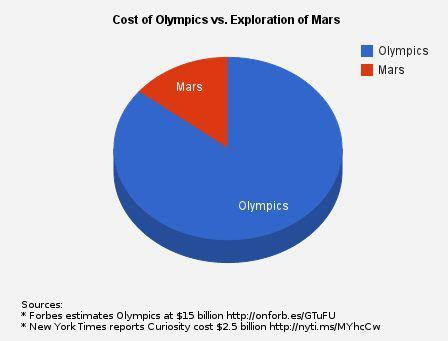On the occasion of Curiosity’s spectacular landing on Mars, a couple of articles discussed the positive ramifications for Earthly problems. On NPR, a headline reads “‘Curiosity’ Signals From Mars That We Can Solve Our Problems On Earth.” The gist of the article is that, amidst our seemingly intractable political and cultural divides in which nothing gets resolved, the level of technical achievement necessary to overcome the “seven minutes of terror” illustrates:
We can solve problems. We can solve really big, really scary and really impossible problems. We can do amazing things. But we can only do these things when, collectively, we step up and take on the mantle of adulthood. We can only do these amazing things when we set aside the childish pleasures of fits and tantrums and rise to the level of responsibility that maturity demands.
There aren’t many problems bigger and scarier than global climate disruption (let’s face it; “climate change” is way too timid sounding). The author, Adam Frank, goes on to write “You don’t alter your planet’s atmospheric chemistry unless you have reached a certain level of, let’s say, “ability”.” One would hope that level of ability corresponds at least somewhat to the aforementioned mature level of responsibility.

Cost isn’t the point we’re making in this post, and it’s kind of irrelevant to compare Curiosity’s cost to the Olympics’, but this graph does add a bit of perspective.
Anyone want to make a similar graph comparing Curiosity’s budget to, say, fossil fuel subsidies or the defense budget?
As if to prove Frank’s point on the ecological and Earth-bound relevancy of planting some cameras and drills on a planet that’s somewhere around 200 million kilometers away and has an ecosystem nothing like ours (if indeed it has an ecosystem at all), a post in The Atlantic Cities discusses “What Mars Can Teach Us About Climate Change.”
We only have one climate to test our hypotheses in. We can’t irreversibly hack Earth’s climate (by pumping it full of toxic gases, for example) to test whether our assumptions are right or wrong—that, obviously, would be disastrous for Earth’s inhabitants. That means climate models are loaded with historical and empirical data to make them function.
If only we could take the model to another planet to really test the underpinning physics.
Bingo. Curiosity, the car-sized mobile chemistry lab that dropped spectacularly onto the surface of Mars yesterday, will give scientists a rare chance to test their assumptions about how climate change works on Earth. It will hunt the surface of Mars for sediment to pick up and drop into its sophisticated onboard machinery, then send back critical insights into how the climate of Mars—once warmer, with rain, rivers, and deltas—has changed over billions of years, lashed by solar winds.
This optimism, inescapable to the EcoOptimist, is heartwarming in its relevance to global warming. But one has to recall that it wasn’t long after the Apollo moon landings that a disparaging metaphorical question arose. As the EcoOptimist, I suppose I shouldn’t make this kind of conjecture, but will we soon be saying “If we can put an SUV on Mars, why can’t we…?” Let’s hope not.

Thanks for putting pie chart of money spent on Olympics versus cost of funding Curiosity’s visit to Mars. With all our self professed ingenuity and cleverness, astonishingly shortsighted creatures aren’t we?
More please!
Thanks,
Johnnie